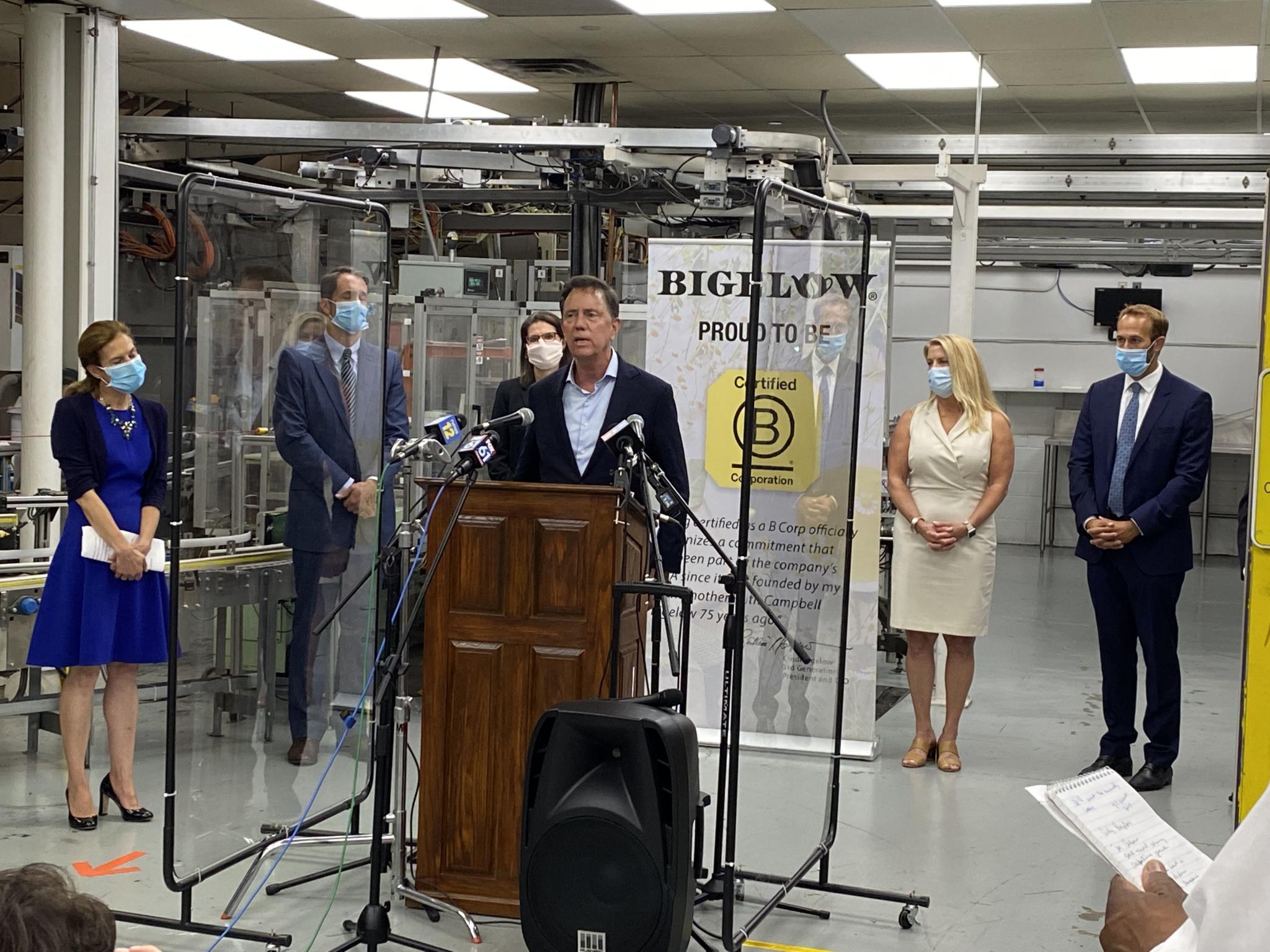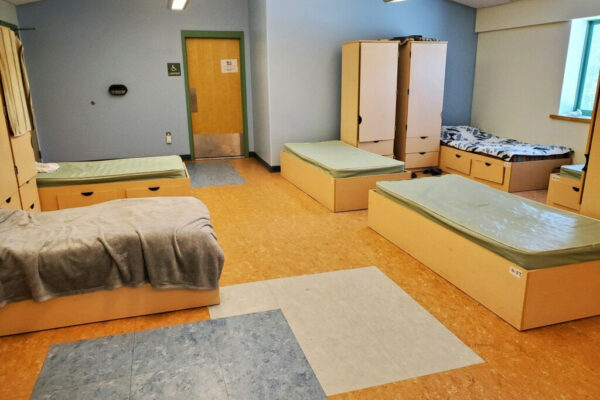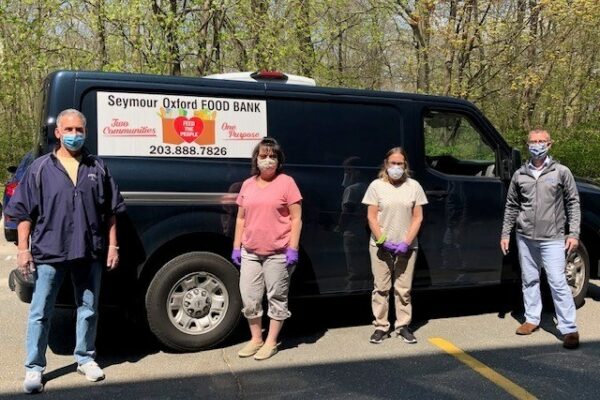Smart Investment: COVID-19 Response and Recovery
As needs quickly change and the community, like the rest of the country, has found itself in the midst of a global pandemic, The Valley has come together with compassion, creativity, and conviction.



Over the course of many years, The Valley has developed a hard-earned reputation of collaboration. Especially during challenging times, this is particularly true of the people who live or work in this region. As needs quickly change and the community, like the rest of the country, has found itself in the midst of a global pandemic – The Valley has come together with compassion, creativity, and conviction.
David Morgan, President/CEO of TEAM, Inc. and Vice Chair for the Valley Council for Health & Human Services, said, “When I think back to March, I remember things got very scary and very dynamic very fast. People who needed help faced uncertainty as access points for assistance became limited or were shut down completely. Our switchboard was overwhelmed as people sought help.”
Food and shelter were needed most. Susan Agamy, MPA, Executive Director for Spooner House and Chair for the Valley Council for Health & Human Services, explained, “The pandemic hit everyone hard but it’s been particularly challenging for those experiencing homelessness. Most shelters have a congregate layout with little opportunity for social distancing. Most people experiencing homelessness are also high-risk due to age, race/ethnicity, and underlying medical conditions.”
Agamy added, “The state stepped in and enlisted 15 hotels to house 1,000 people from 63 shelters as well as those living on the streets. We continued our case management work, providing meals, and crisis intervention as well as ensuring access to laundry facilities because there was still work to be done.”
Approximately 400 people statewide, including those from Spooner House, have found permanent housing since the beginning of June.
Joe Carbone, President and CEO of The WorkPlace, believes the Valley will emerge stronger from the pandemic. “The impact of COVID-19 on the workforce and local economy is still evolving but there is tangible evidence of enthusiasm among consumers.”
“We went from 3.1% unemployment in this region to 19% in less than five weeks but it’s important to note that this was an intentional shutdown and not a recession,” Carbone continued. “The momentum we saw prior to the pandemic is still there. Despite the high rate of unemployment, we’re still seeing people getting jobs.”
No one has experience dealing with the economic impact of a virus on this scale. Carbone noted, “I think we need to worry about people in hospitality, retail, and some of the supportive fields in healthcare along with the impact of social distancing on businesses. We’ve seen some restaurants close but we need to recognize the impacts that the pandemic will have on manufacturing. As these businesses reopen, some must reconfigure the flow of product or change schedules to keep people six feet apart. The longer it takes to get back to what we called ‘normal,’ the more businesses will fail.”
The WorkPlace is also responding with an online version of its successful Platform to Employment program, which educates people on alternate occupations as the economy continues to change.
Carbone said, “The major objective is to avoid long-term unemployment. This program can keep individuals engaged as we offer motivation and job search support. Employers benefit, too, by having a path to a skilled workforce.”
The safety of residents is directly linked to safety in the workforce and more conversations are taking place with partners in the business community. Agamy said, “As each business has its own response protocols, we have to think about a community approach. There have been many calls per week to match needs with resources. The Valley Council for Health & Human Services is all about community responses. Much of my work as Chair has been to ensure that ongoing communication is taking place as efficiently and effectively as possible.”
Morgan feels that the summer months have brought a welcomed and much needed change of pace. He has urged staff to use this time to rest and prepare for the months ahead. As moratoriums on rent end, unemployment benefits shrink, and an expected resurgence of the virus occurs, the situation could bring about a tsunami of various needs later this year. “We can’t take care of others if we’re not taking care of ourselves,” he said.
Agamy agreed, “This has been a perfect storm and, at the Valley Council, we’ve been able to look beyond the immediate crisis to equity issues in the Valley. I think we can be more inclusive with voices at the table and how that translates to identifying priorities and the work we do moving forward.”
The state has established regional long-term recovery steering committees to help provide input into needs and opportunities as they evolve, and then match those needs to assets and resources at the state and federal level. She continued, “While we have Valley operations and initiatives, there will be pathways to other resources and knowledge bases.”
Morgan shared several successes: TEAM was able to identify volunteers who expressed interest and wanted to become part of the emergency response efforts. The new database of volunteers proved to be a critical resource, particularly for food pantries. Many food banks feared they would close because they lost their own core volunteers, many of whom were part of the at-risk population.
“Childcare had another ripple effect,” Morgan said. “Clearly having safe and affordable childcare options for workers is a part of effective public emergency response. If our healthcare workers didn’t have childcare, they couldn’t go to work. In collaboration with the state, TEAM has provided childcare for Griffin Hospital essential workers throughout the pandemic.”
TEAM also became a grab and go site for school lunches, and early on it became evident that those children ages birth to 4-years old were particularly vulnerable. “We were deploying a lot of formula and diapers. The surge in need was significant. We gave out more than 52,000 diapers over 90 days during the midst of the pandemic when our normal volume is 100,000 annually.”
Food pantries struggled with access to provisions just as the shelves in grocery stores went bare. The demand for Meals on Wheels went up by 29% as congregate and senior centers closed.
“Another element in all of this is human connection,” Morgan pointed out. “As levels of anxiety increased, people found they needed to connect with someone. I saw TEAM case workers talking longer with clients because these people simply needed someone to talk with. This has been a scary and isolating experience, especially for people in significant economic need.”
Agamy, Carbone, and Morgan and many more dedicated people throughout the Valley continue to meet at the state and local level, balancing unknown factors with the resources offered by people who want to contribute and be part of the solution during a truly unprecedented time. As each have of these leaders has acknowledged, the work to address the impacts of the virus is a marathon and not a sprint, and that we are truly all in this together.
